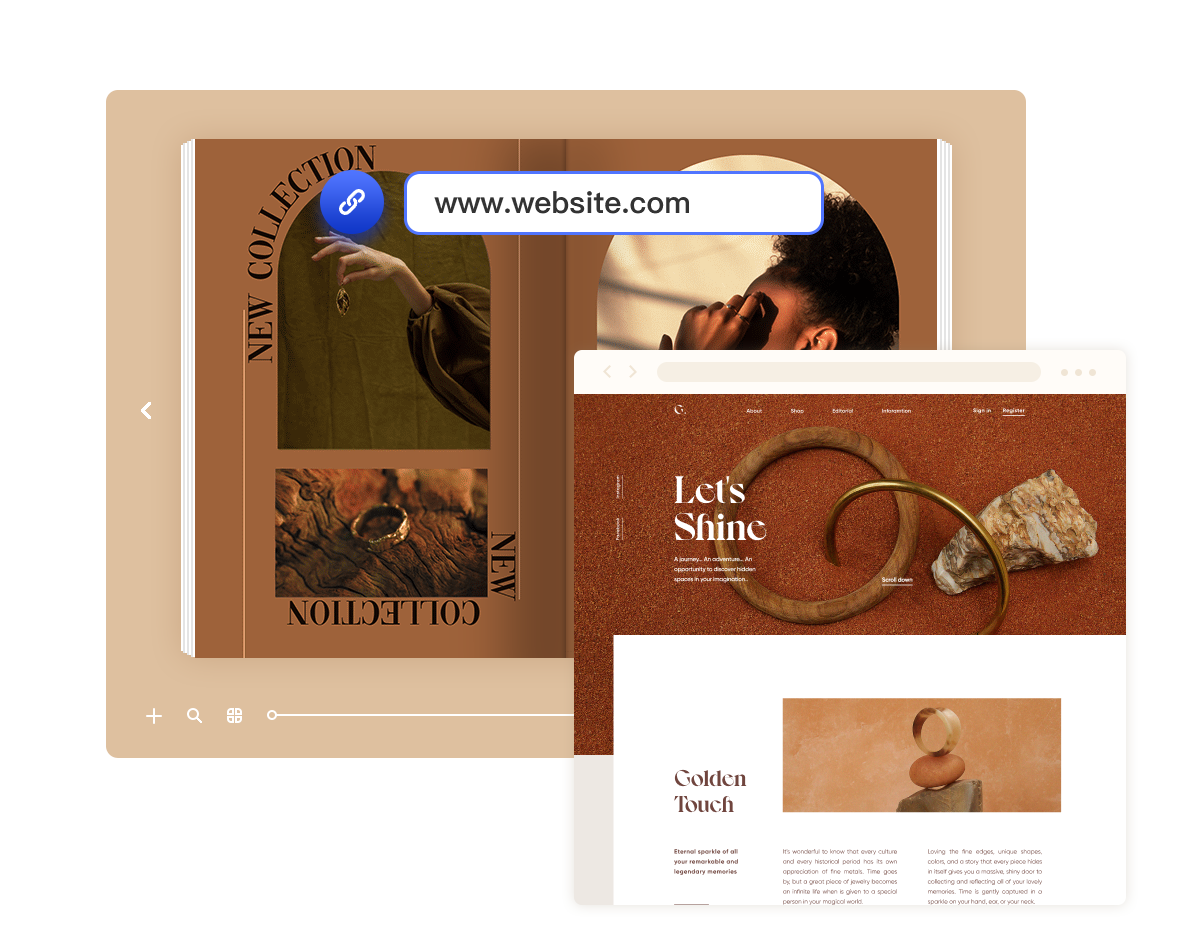In today’s digital world, content presentation plays a crucial role in how information is received and retained. Gone are the days when static PDFs were enough; now, businesses and content creators seek dynamic ways to engage their audience. Say hello to page flipper software i.e. a game-changer in digital publishing. This software solution is also known as digital flipbook software or page flip software.
In this write-up, we talk about the features of page flipper software and more.
What Are Digital Flipbooks?
Digital flipbooks replicate the experience of flipping through a physical book or magazine on your screen. Unlike traditional PDFs, these interactive documents come alive with animated page turns, embedded multimedia, and clickable links. They offer a seamless blend of visual appeal and functionality, making them a preferred choice for a range of applications, from e-magazines to digital catalogs.
Top 9 Features of Page Flipper Software
When it comes to choosing the right software, here are the top features to look out for:
1. Interactive Page Flipping
The hallmark of any page flip software is its ability to mimic the natural page-turning experience. Look for software that offers smooth, realistic page flips with customizable animations.
2. Multimedia Embeds
Enhance your content by embedding videos, audio clips, and image galleries directly into your flipbook. This feature is essential for creating engaging, multi-sensory experiences.
3. Hyperlink Integration
Clickable links within your flipbook can lead readers to external websites, internal pages, or even trigger email actions. This feature is particularly useful for marketing and educational materials.
4. Mobile Responsiveness
Ensure your flipbook looks great on any device. Mobile responsiveness is key to reaching a wider audience, as more people access content on their smartphones and tablets.
5. Customizable Templates
A variety of templates can help you create professional-looking flipbooks quickly. Customization options allow you to match the design with your brand’s aesthetics.
6. Analytics and Reporting
Track reader engagement with built-in analytics. Metrics such as page views, time spent on each page, and click-through rates provide valuable insights into how your content is consumed.
7. SEO Friendly
Optimize your flipbook for search engines. Good page flip software should allow you to add metadata, keywords, and descriptions to improve your flipbook’s search engine ranking.
8. Offline Access
Allow readers to download and view your flipbook offline. This feature is particularly beneficial for users in areas with limited internet access.
9. Security Features
Protect your content with password protection feature. This ensures that your intellectual property remains secure.
What are the industries that use page flipper software and how?
The software solution allows digital content to be read like a traditional book. This technology is increasingly popular across various industries due to its dynamic presentation, immersive experience, and ease of use. Below are the top eight industries where the software solution is making a significant impact and how they are leveraging this innovative tool.
1. Publishing
How They Use It:
- E-books and Magazines: Publishers use page flip software to create digital versions of books and magazines. Readers can enjoy the tactile experience of flipping pages on their devices, making the digital reading experience more engaging.
- Interactive Content: Publishers integrate multimedia elements such as videos, audio clips, and hyperlinks into their content, enhancing reader engagement and providing additional context.
Benefits:
- Enhanced Reader Experience: The interactive features make reading more enjoyable and engaging.
- Cost-Effective: Reduces printing and distribution costs associated with traditional publications.
2. Education
How They Use It:
- Textbooks and Study Materials: Educational institutions use page flip software to provide students with digital textbooks and study guides.
- Interactive Learning: Teachers incorporate multimedia elements to create interactive lessons and assignments, making learning more engaging and effective.
Benefits:
- Accessibility: Students can access their materials anytime, anywhere, on any device.
- Interactive Learning: Multimedia elements enhance understanding and retention.
3. Marketing and Advertising
How They Use It:
- Brochures and Catalogs: Companies use page flip software to create interactive brochures and catalogs that showcase their products and services in a visually appealing manner.
- Interactive Ads: Marketers integrate videos, animations, and links into digital ads, making them more engaging and effective.
Benefits:
- Increased Engagement: Interactive content captures viewers’ attention and keeps them engaged longer.
- Measurable Impact: Integrated analytics allow marketers to track engagement and measure the effectiveness of their campaigns.
4. Real Estate
How They Use It:
- Property Listings: Real estate agencies use page flip software to create interactive property listings that showcase images, videos, and detailed information about properties.
- Virtual Tours: Agents offer virtual tours of properties, allowing potential buyers to explore homes from the comfort of their own devices.
Benefits:
- Enhanced Listings: High-quality visuals and interactive elements provide a comprehensive view of properties.
- Convenience: Virtual tours save time and make the property viewing process more efficient.
5. Retail
How They Use It:
- Product Catalogs: Retailers use page flip software to create digital product catalogs that are easy to browse and shop from.
- Lookbooks: Fashion retailers create interactive lookbooks that showcase their latest collections and trends.
Benefits:
- Convenience: Customers can browse catalogs and make purchases directly from their devices.
- Engagement: Interactive elements such as videos and animations make shopping more enjoyable.
6. Corporate Communications
How They Use It:
- Annual Reports: Companies use page flip software to create digital versions of their annual reports, complete with interactive graphs, charts, and multimedia elements.
- Internal Communication: Organizations distribute digital newsletters, policy manuals, and training materials to employees.
Benefits:
- Professional Presentation: Interactive features make reports and communications more visually appealing and engaging.
- Efficiency: Digital distribution saves time and reduces printing costs.
7. Non-Profit Organizations
How They Use It:
- Impact Reports: Non-profits use digital flipbook software to create digital impact reports that showcase their achievements and initiatives.
- Fundraising Materials: Organizations produce interactive brochures and newsletters to engage supporters and donors.
Benefits:
- Transparency: Interactive reports provide a comprehensive view of the organization’s activities and impact.
- Engagement: Multimedia elements make fundraising materials more compelling and effective.
8. Travel and Tourism
How They Use It:
- Travel Guides: Tourism boards and travel agencies use flipbook software to create interactive travel guides that highlight destinations, attractions, and travel tips.
- Promotional Materials: Agencies produce digital brochures and magazines to promote travel packages and deals.
Benefits:
- Inspiration: High-quality visuals and interactive elements inspire and inform potential travelers.
- Convenience: Digital guides and brochures are easily accessible on any device.
All in all, it is a versatile tool that enhances the digital experience across various industries. From publishing to education, marketing to real estate, this technology offers numerous benefits, including increased engagement, cost savings, and improved accessibility. If you are looking to elevate your digital content and connect with your audience in a more dynamic way, consider integrating page flip software into your strategy.
Final Words
Page flipper software is transforming the way we present digital content, offering an immersive and interactive experience that static PDFs simply can’t match. Whether you are in publishing, education, marketing, real estate, or e-commerce, integrating digital flipbooks into your content strategy can significantly enhance engagement and drive better results.
Are you ready to take your digital content to the next level? Explore our top-rated software and start creating captivating flipbooks today.



